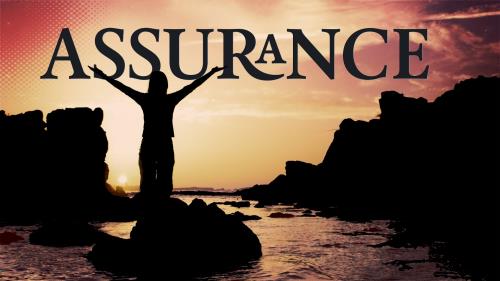-
The Saving Blood Of The Lamb Series
Contributed by Bobby Mcdaniel on Oct 19, 2003 (message contributor)
Summary: Part 3 of a series on Old Testament parallels of New Testament salvation. This message compares the saving blood of the Passover lamb to the saving blood of the Lamb of God.
Old Testament Parallels of New Testament Salvation — Part 3
The Saving Blood of the Lamb
Scripture Ref: Exodus 12:1-13, 14, 46; 13:1-16
John 1:29; 3:5-7
Hebrews 10:14, 29
Other Ref: All the Messianic Prophecies of the Bible, Lockyer
The Bible Knowledge Commentary
1. Introduction
a. Paul Brand wrote in the March 4, 1983 issue of Christianity Today:
Blood spatters the pages of mythology and of history. Drinking it gives strength and new life: to the ghosts of the dead in The Odyssey, to the Roman epileptics who dashed onto the floor of the Coliseum to quaff the blood of dying gladiators, to Kenya’s Masai tribesmen who still celebrate feast days by drinking blood freshly drawn from a cow or goat.
In early history, blood assumed a mysterious, almost sacred, aura in human relations. An oath held more power than a person’s word, but blood made a contract nearly inviolable. The ancients, unashamed to act out the physical literality of their symbols, would sometimes seal blood contracts by cutting themselves and mingling their blood.
We moderns inherit quaint symbolic tokens of the intrinsic mystery of blood: a wedding ring on the "/leech finger," which was believed to contain a vein that led directly to the heart, or perhaps a child’s game of "blood brothers" in which two participants solemnly and unhygienically act out their undying loyalty. We echo misconceptions, too, when we use such terms as "pure blood," "mixed blood," "blood relations," harking back to the days when blood was assumed to be the substance of heredity.
Even after blood has been analyzed in laboratories and demythologized, it still retains some power, if only in the queasy feeling it evokes when we see it shed. There is something horribly unnatural—to some, physically nauseating-about watching the juice of life seep uncontrollably out of a living body. No wonder religions throughout history have exalted blood to sacral status. A ravaging plague, a minor drought, a desire to triumph over enemies, a decoy for the gods’ anger—anything of major import may prompt a bloody sacrifice in a primitive religion.
Although worshipers feel increasingly uncomfortable with the thought, Christianity too is inescapably blood based. Old Testament writers describe blood sacrifices in painstaking detail and their New Testament counterparts layer those symbols with theological meanings. The word "blood" occurs three times as often as the "/cross" of Christ, five times as frequently as "death." And daily, weekly, or at least monthly (depending on denomination), we commemorate Christ’s death with a ceremony based on his blood.
b. Last week we learned how the fiery serpent fashioned by Moses’ hand paralleled Christ’s crucifixion and resulting salvation.
c. Today we are going to look at how the Passover lamb and its sprinkled blood parallels the depiction of Christ as the Lamb of God and how His shed blood performs the same function for us.
2. Prologue
a. Moses and Aaron are negotiating with Pharaoh to let the Jews go and Pharaoh is not coopering.
b. Because Pharaoh’s heart is hardened, he and his people are subject to a number of plagues, each successively worse than the other:
(1) The Nile turns to blood, the fish die, the river stinks, and its water is undrinkable.
(2) The land is inundated with frogs, and the land reeked with the smell of their death.
(3) Gnats aggravate man and beast alike.
(4) Flies are everywhere except where the Jews were, and the land was destroyed by them.
(5) All the Egyptian livestock are killed, but not of the Jews’ animals suffered.
(6) All the Egyptians and their livestock are plagued with boils.
(7) All Egyptian crops, and all Egyptians, their slaves, and their livestock not brought into shelter are destroyed by hail.
(8) Locusts come and destroy any plants not destroyed by the hail.
(9) For three days the plague of darkness demoralize the Egyptians, but not the Jews, for they still have light in their homes.
(10) Death to all the firstborn — Egyptian, Egyptian slave, and Egyptian cattle.
c. Moses told his people of God’s drastic purpose and warned them they must be ready to leave Egypt the blow struck.
d. Following the plagues, Israel had a relationship with God in worship, fellowship, and service in a way they never had before.
3. A Comparison
a. Read Exodus 12:1-13
b. Surviving the first nine plagues required no actions on the parts of the Israelites, however surviving the final plague did.
(1) Each home had to off and slay in the evening a male lamb without blemish.
(2) The blood of that lam then had to be sprinkled on the two sideposts and the lintel of the door of every house.
(3) The blood-sprinkled doors assured those behind them that when the spirit of death was doing is work in Egypt they would be untouched.

 Sermon Central
Sermon Central



